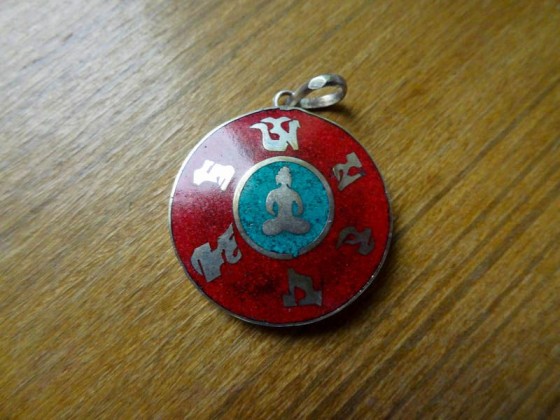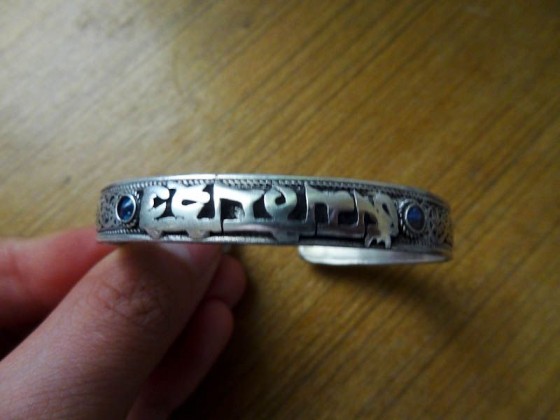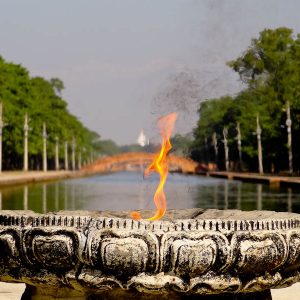Visiting A Tibetan Refugee Camp
It’s funny how things work out sometimes. Before coming to Nepal, I had really hoped I could visit Tibet. It’s located right next to Nepal and despite the mountains, it’s possible to travel there.
I knew it wouldn’t be easy. You need permits from the Chinese government and they forbid you from independent travel there – only as part of a group tour. Though disappointing, it was still not impossible. I had read you can take the group tours for as low as $400.
Well, when I got here I realized it’s more like $1400. Part of the high cost is the need to fly from Lhasa back to Nepal, or to your next destination since you can’t independently travel by bus back to Nepal or up into China.
Though disappointed, it didn’t stop me from trying to immerse myself into their culture a bit. I saw the movie Seven Years in Tibet, which was amazing and inspired me to read the full account by the book of the same title.
The book has taught me a ton about Tibetan culture and how life was there in the 1940’s before…before everything went downhill for them. It also taught me a few Tibetan words and about the food, which I’d get to use in this refugee camp.
Tashiling Refugee Camp
This refugee camp, a bit outside of Pokhara but definitely within walking distance, caught my eye the moment I discovered it on the map. I didn’t know what to expect, though the map did show a monastery there.
As I got there it was a bit eerie. The camp is open and you can walk right in. I didn’t expect otherwise, for it not to be open would suggest it is more like a prison than a camp. But the place seemed deserted.
I walked in and didn’t know where the monastery was. I kind of felt like an uninvited guest trespassing on forbidden land.
Some pictures of the camp:
- The Tashling Tibetan Refugee Camp
- The Tashling Tibetan Refugee Camp
- The Tashling Tibetan Refugee Camp
- The Tashling Tibetan Refugee Camp
- The Tashling Tibetan Refugee Camp
- The Tashling Tibetan Refugee Camp
- The Tashling Tibetan Refugee Camp
Making A Friend
But as I walked a bit more, a lady came to the door and said hello. I had already passed her door at that point, so I had to turn around to say hello back.
She asked me if I was from Israel. I said no, from the U.S., but I’m often asked if I’m Israeli on the road.
And from there we had a 30-minute conversation. My feeling like an unwelcome guest quickly vanished and I felt very happy being there.
She is 40, though in my opinion looked younger. She spoke English quiet well, as well as Nepali and Tibetan. She has spent her entire life in the refugee camp, as her parents fled Tibet in 1959 – the same year the Dalai Lama fled to India.
As we talked, her reverence for Tibet was clear. It’s a land she has only heard about from her parents and elders, but the love was palpable.
One thing Heinrich Harrer, author of Seven Years in Tibet, mentions over and over again is how much Tibetans love to laugh. My experience was exactly the same. This lady laughed more than almost any other adult I have ever met. She found humor in everything. At one point she asked me what my name was and naturally I asked for hers in return. This prompted a solid 60 seconds of laughing.
Why did she laugh for 60 seconds?
She thought that from my point of view, her name must be very funny. Compassion and empathy are deeply-held qualities in the Tibetan people, and I guess this manifests itself in a strange way sometimes :). Unfortunately, I forgot her name already, but yes, it was hard to pronounce.
A Nepali guy came through the camp selling potatoes. As is customary here, people have their own mobile fruit and vegetable stands. Either by bike or by foot, the fruit and vegetables are transported around and people can buy them along the side of the street or in their neighborhood.
She asked me if fruit and vegetables were sold this way in my country. I explained that there are markets, but generally such products are bought in a store.
In a way, such is my life on The Happy Nomad Tour, bring the lives of locals to a mostly Western audience, and our lives to them.
After talking for about half an hour, we parted ways and I went to see the religious buildings.
Religious Buildings
Below are pictures of the stupa, monastery, and a building made to commemorate the 50th anniversary of the Dalai Lama assuming state responsibility.
- Stupa
- Shree Gaden Dhargay Ling Monastery
- Shree Gaden Dhargay Ling Monastery
- Shree Gaden Dhargay Ling Monastery
- Dalai Lama Dedicated Building
- Dalai Lama Dedicated Building
Flags
One lovely thing about Tibetan cities is their use of flags as decoration. It really brightens everything up and gives the place some character. The flags have messages on them, which I had never seen close up until I visited this camp.
The flags I saw close up have the phrase Om Ma Ni Padme Hum on them. This phrase is central to Tibetan Buddhism. Below is a chant heard throughout Nepal (and Tibet). I can’t get this song out of my head and for being so simple, I find it extraordinarily beautiful. Here’s the video in case it doesn’t appear below.
What does it mean? Better for the Dalai Lama to explain via Wikipedia:
“It is very good to recite the mantra Om mani padme hum, but while you are doing it, you should be thinking on its meaning, for the meaning of the six syllables is great and vast…
The first, Om […] symbolizes the practitioner’s impure body, speech, and mind; it also symbolizes the pure exalted body, speech, and mind of a Buddha[…]”
“The path is indicated by the next four syllables. Mani, meaning jewel, symbolizes the factors of method: (the) altruistic intention to become enlightened, compassion, and love.[…]”
“The two syllables, padme, meaning lotus, symbolize wisdom[…]”
“Purity must be achieved by an indivisible unity of method and wisdom, symbolized by the final syllable hum, which indicates indivisibility[…]”
“Thus the six syllables, om mani padme hum, mean that in dependence on the practice of a path which is an indivisible union of method and wisdom, you can transform your impure body, speech, and mind into the pure exalted body, speech, and mind of a Buddha[…]”
— H.H. Tenzin Gyatso, 14th Dalai Lama
With that explained, below some pictures of the flags from the camp.
- Tibetan Flag
- Flags Atop The Homes In The Camp
- Flags Atop The Dedicated Dalai Lama Building
- Tibetan Om Ma Ni Padme Hum Flags
Lunch
I was looking forward to lunch. I noticed that a restaurant served butter tea. In Seven Years in Tibet he talks at length about butter tea. It’s the staple drink in Tibet and I wanted to try it. Now was my chance!
The restaurant is run by a nice Tibetan family. This mountain, Mount Kailash, is considered sacred in both Hinduism and Buddhism. Regardless of its sacredness, millions and millions of people depend on its melted snow for water.
I ate a shabagleg. Actually, it reminded me of a cross between a Venezuelan cachapa and a fried Polish pirogi. Either way, it was great and I enjoyed every bite! As for the butter tea, yes, it had a very buttery taste and I’ll be perfectly fine if I never drink it again.
As I ate lunch, I continued reading Seven Years in Tibet and it was just a wonderful afternoon.
Souvenirs
I have to preface this by saying I never buy souvenirs on the road. I have no space for them and most are mass-produced pieces of plastic made in China. That said, I couldn’t help but enter a Tibetan lady’s shop when she asked me to do so.
I probably spent half an hour in there.
Why?
She hit me with the magic words.. I saw the long, thin pendant below and asked her what it said. “Om mani padme hum,” of course. Hmm. This magic bullet penetrated my armor.
She told me that the mantra means “long life” which contradicts what the Dalai Lama says above. But I think these mantras are hard to translate and that was her best attempt.
I didn’t haggle with her. She offered prices that seemed reasonable, though at the end she gave me a free gift to keep me safe on my journey. This may have been an authentic token of her appreciation for our nice conversation, or maybe it was because I severely overpaid and she felt sorry for me 🙂 Either way, I got the gifts below for 1000 Nepalese Rupees ($11.60).
For my mom. She has a necklace where she has a pendant of an A for me, Z for my brother, and a 25 (a gift I gave her for her 25th anniversary). This would make a nice addition, with the phrase “Om mani padme hum” written in Tibetan encircling a Buddha.
For my friend in India. She recently got married and there may be kids on the way in the future. In Nepal families put a bracelet on babies’ ankles. This one says “Om mani padme hum” in Tibetan (again, I thought it meant “long life” which fits perfectly for a baby). Hopefully they have the same bracelet tradition in India!
For a friend, a pendant that says “Om mani padme hum.” This was the pendant that got the whole conversation and interest in these souvenirs started.
Finally, her gift to me to keep me safe.
Conclusion
Sadly, this is as close to Tibet as I’ll get for now. I hope to visit the Tibetan Exile Community in Northern India as well.
The people were so nice, so friendly.. it’s just sad. The Tibetan story isn’t unique as there are millions of refugees worldwide. Each new conflict creates new refugees and what has happened to Tibet is basically what happened to the Native Americans.
When are we going to learn how to get along?
It’s hard not to ask such a basic but important question at times like these, being fully aware of the number of refugees my country has created directly and indirectly.
I imagine a world of peace. I hope we get there someday, “and the world will live as one.”
































![cq5dam.thumbnail.400.400[1]](https://www.happinessplunge.com/wp-content/uploads/2012/10/cq5dam.thumbnail.400.4001.png)




Their plight is a sad one, but what a great experience you’ve had and you helped out the local economy (food and trinkets)… got Depeche Mode stuck in my head with their song, “People are People”
Thanks!
It was so nice to read your blog. I am myself a Tibetan and its wonderful how you look and appreciate each and everything about us. Hope you learn more and go to explore more.
Thanks for your comment!
I love the sincerity of your words. I too visited this camp twice recently, and also the other two camps in Pokhara. What struck me was the feeling of pure love in the monastery. Great post!
Hello Adam,
My name is Tenzin Choeying and I was born in Tashiling Camp. I skimmed through your blog and noticed some pictures of my old house. I also read the interaction you had with my neighbor, the lady who laughed for 60 seconds. Her name is Nyima Dolma and she recently moved to Toronto, Canada with her family.
I really appreciate your time to put this together. I hope you had a great experience there and maybe visit again soon! I heard the camp has changed a bit since. Also, there are many monasteries and Tibetan communities in the U.S. if you would like to stay in touch with the culture!
Tashi Delek!
P.S Happy Losar!
Thank you for sharing this story. I’m experiencing the same feeling with ‘Om Mani Padme Hum’ in Kathmandu right now. It’s amazing… Thank you again for this beautiful article.
I visited in Dec 1994 – how do I post photos on here please?
Hello Alan,
It seems the author is not active. I would appreciate if you could share the pictures with me at [email protected]
I would love to share them with the people of Tashiling Camp.